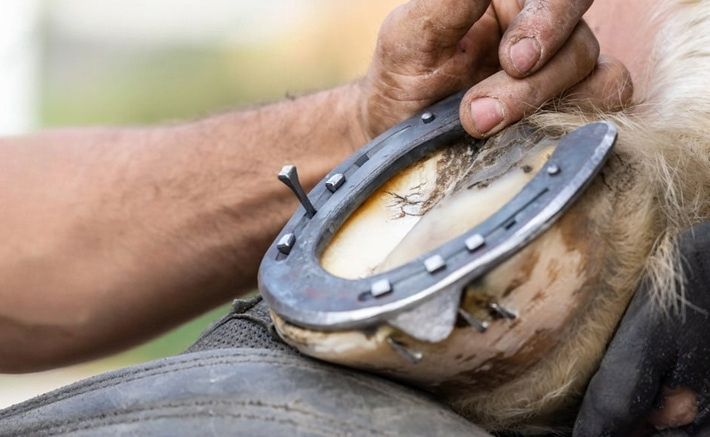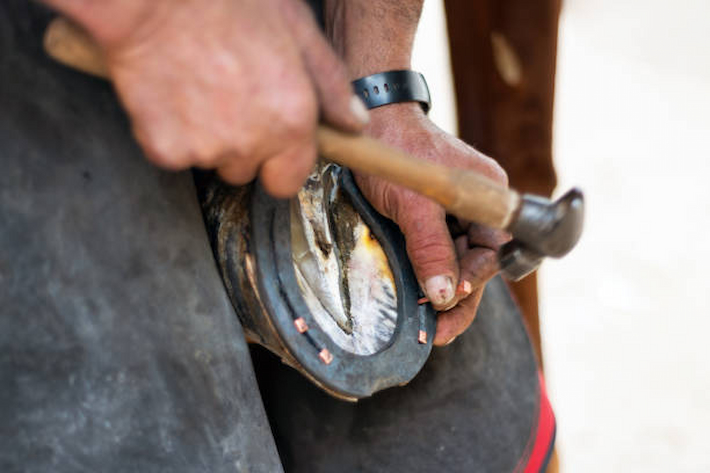When it comes to caring for horses, one of the most important things a farrier or owner can do is maintain those hooves. A well-maintained hoof means a healthier, happier horse that can perform at its best whether it’s out on the trail, in competition in the show ring, or breaking up the fields.
Of the tools and equipment involved in the care of the hooves, a high-quality horseshoe nail is crucial as it secures the shoe onto the hoof and provides stability, protection and comfort. Whether you have experience with horses or just ever asked yourself how a little but significant bit of equipment works, this guide will provide you with information about the fundamentals.
Importance of Horseshoe Nails

The horseshoe nails can look like ordinary nails at a glance, yet they are specially made for the sole purpose of nailing shoes to hooves without causing damage. Ordinary nails are different in that horseshoe nails are expertly crafted and heat-treated so that they can drive through the hoof wall without causing any damage.
They’re driven through the outer hoof horn, which is a hard toenail equivalent, and bent over or clinched to fasten the shoe firmly in position. Well-fitting nails do not just keep the shoe on but also help to balance and align the hoof. If it’s the wrong nail or if it’s nailed incorrectly, however, it can be painful, bruised, or even lame.
That’s why selecting the right nails for every horse and every shoeing case is so important. Whether you’re a farrier who shoes horses for a living or an owner who wants to better understand the process, knowing how nails work and why they matter is the first step in responsible hoof care.
Features

Size
A horseshoe nail comes in a variety of sizes which are chosen based on the thickness of the hoof wall and the type of shoe being used. The size of a nail is usually designated by a number, with a higher number indicating longer and thicker nails. For example, a size 5 will be longer and heavier than a size 3. Draft horses and larger horses require longer and stronger nails, whereas ponies or smaller horses require short and thin ones.
Selecting the proper size is extremely critical. A nail that is too large will crack the hoof wall, yet one that is too small will fail to hold the shoe securely. Each hoof is inspected by a skilled farrier to determine the best size.
Materials
Most horseshoe nails are made of high-strength steel, which provides the strength and elasticity needed for the job. Steel nails are resistant to bending and shearing when driven into a hard hoof horn. Others are coated or galvanized to give extra protection against corrosion, especially if a horse is heavily covered in wet or muddy situations.
Copper-plated nails also gained more popularity as copper is said to help keep the hooves in healthy condition by preventing bacterial growth. Regardless of the material, the quality of the nail plays a major role in determining how effectively it functions and how long it will last.
Shapes
The other crucial factor to consider is the shape of the nail. Horseshoes have a wedge-shaped, tapered tip that is uniquely formed to exit the hoof wall at the right position. The shank of the nail (the body) is square or rectangular, and this provides ease of locking.
There are bevelled edge nails to reduce stress on the hoof wall, and there are those that are more narrow-appearing to fit over thin shoes or thin-walled hooves. The shape of the head of the nail will also vary to match the shoe being used, like a concave racing plate, a heavy draft, or a therapeutic shoe.
Types
There are several overall types of horseshoe nail, each for specific horses and purposes. City headnails are likely the most common, being flat-headed with a minimal taper and suited well to general riding and work horses. E-head nails have more taper and are often used on concave shoes, providing a snug fit.
Race nails are lighter and shorter, suitable for racehorses that have thin, light plates. They minimize extra weight and keep the horses running. Slim blade nails have a thinner shank, ideal for hooves with reduced wall thickness or for shoes that need a more delicate nail hole.
Regular nails, or “regular head,” have a more solid build for larger horses or more gripping strength. Next are specialty nails like the mustad copper coated or liberty copper nails that combine special materials with creative design to improve hoof health.
The correct nail depends on the horse’s size, the kind of work it is performing, the shoe type and the hoof’s condition. Farriers tend to have a range of them to choose from so that they can pick exactly what is needed for each situation.
To Sum Up
Selecting the proper nail is much more than picking up whatever appears right off the shelf. It’s a considered process that takes into account the workload of the horse, the structure of the hoof, the type of shoe and the conditions in which the horse lives. From the dimensions and shape to the material and head form, every aspect is involved in how well the nail works.



